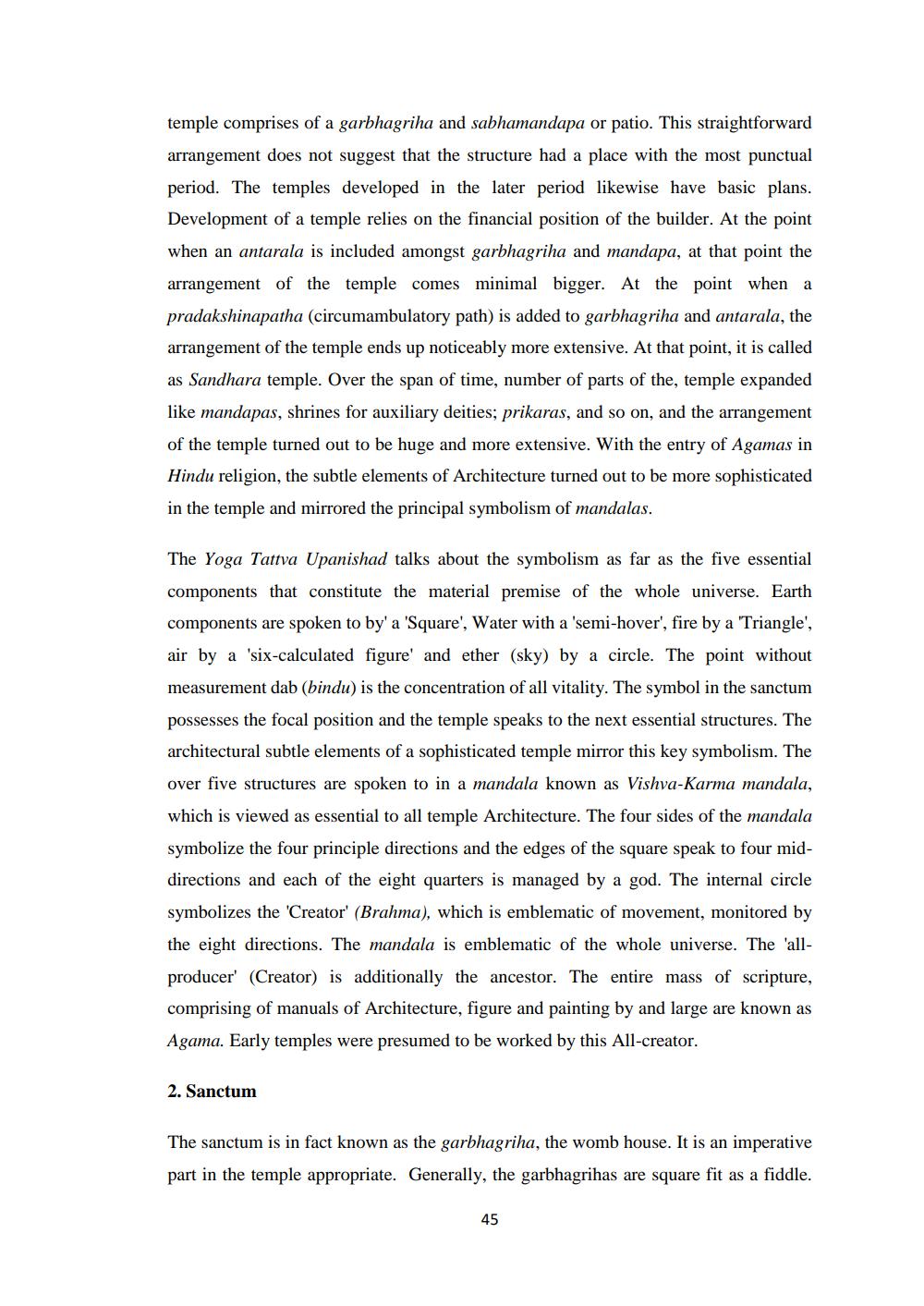________________
temple comprises of a garbhagriha and sabhamandapa or patio. This straightforward arrangement does not suggest that the structure had a place with the most punctual period. The temples developed in the later period likewise have basic plans. Development of a temple relies on the financial position of the builder. At the point when an antarala is included amongst garbhagriha and mandapa, at that point the arrangement of the temple comes minimal bigger. At the point when a pradakshinapatha (circumambulatory path) is added to garbhagriha and antarala, the arrangement of the temple ends up noticeably more extensive. At that point, it is called as Sandhara temple. Over the span of time, number of parts of the, temple expanded like mandapas, shrines for auxiliary deities; prikaras, and so on, and the arrangement of the temple turned out to be huge and more extensive. With the entry of Agamas in Hindu religion, the subtle elements of Architecture turned out to be more sophisticated in the temple and mirrored the principal symbolism of mandalas.
The Yoga Tattva Upanishad talks about the symbolism as far as the five essential components that constitute the material premise of the whole universe. Earth components are spoken to by' a 'Square', Water with a 'semi-hover", fire by a Triangle', air by a 'six-calculated figure' and ether (sky) by a circle. The point without measurement dab (bindu) is the concentration of all vitality. The symbol in the sanctum possesses the focal position and the temple speaks to the next essential structures. The architectural subtle elements of a sophisticated temple mirror this key symbolism. The over five structures are spoken to in a mandala known as Vishva-Karma mandala, which is viewed as essential to all temple Architecture. The four sides of the mandala symbolize the four principle directions and the edges of the square speak to four middirections and each of the eight quarters is managed by a god. The internal circle symbolizes the 'Creator' (Brahma), which is emblematic of movement, monitored by the eight directions. The mandala is emblematic of the whole universe. The 'allproducer (Creator) is additionally the ancestor. The entire mass of scripture, comprising of manuals of Architecture, figure and painting by and large are known as Agama. Early temples were presumed to be worked by this All-creator.
2. Sanctum
The sanctum is in fact known as the garbhagriha, the womb house. It is an imperative part in the temple appropriate. Generally, the garbhagrihas are square fit as a fiddle.
45




